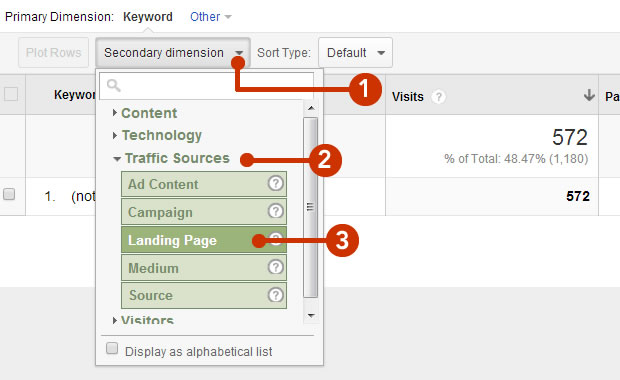Secondary Dimension in Google Analytics: Finest Practices and Tips
Enhance Your Data Analysis Using Additional Dimension in Google Analytics
Checking out the capabilities of second dimensions in Google Analytics opens a world of opportunities for refining information evaluation. By layering added dimensions onto key information collections, an even more intricate narrative emerges, dropping light on customer interactions and efficiency indicators.
Comprehending Second Dimensions
Secondary measurements in Google Analytics refer to added criteria that can be added to the main dimension, allowing for a much more detailed analysis of information (Secondary Dimension in Google Analytics). By integrating second dimensions, experts can sector and filter information to uncover patterns, fads, and connections that could not be apparent when looking at the information as a whole.

Benefits of Using Second Measurements
When evaluating data in Google Analytics, the usage of secondary measurements offers invaluable understandings right into customer behavior and performance metrics. By including an additional dimension to your key data, you can delve much deeper into the features of your web site site visitors and their interactions.
Furthermore, second dimensions boost the context of your primary information, providing a more thorough view of individual engagement and performance metrics. In general, the usage of second measurements in Google Analytics can considerably boost the depth and high quality of your information analysis, leading to even more informed decision-making and enhanced results.
How to Include Secondary Measurements
By integrating additional dimensions in Google Analytics, users can gain deeper insights into their information evaluation procedure, permitting for even more comprehensive examination of user habits and performance metrics. Adding secondary measurements is an uncomplicated process that can substantially improve the depth of evaluation. Once in the report, situate the "Additional measurement" tab above the data table.
Studying Information With Secondary Dimensions
Using secondary dimensions in information analysis offers a much more thorough understanding of user behavior and efficiency metrics. By including an additional dimension to your main data embeded in Google Analytics, you can delve deeper right into the attributes of your web site visitors and their interactions. Incorporating the main dimension of 'source/medium' with the second measurement of 'landing page' can reveal which details pages are attracting web traffic from different sources, assisting you optimize these pages for much better involvement.

Fundamentally, evaluating information with second dimensions empowers you to get valuable understandings right into user behavior, identify fads, and make educated decisions to improve the performance of your electronic properties.
Best Practices for Second Measurements
In data analysis, integrating second measurements efficiently can significantly boost the deepness of understandings derived from metrics and user habits patterns. When utilizing second dimensions in Google Analytics or any various other analytical device, it is vital to comply with ideal practices to guarantee the precision and significance of the data analysis.
One trick ideal practice is to meticulously pick secondary measurements that match the primary read review dimension being assessed. Selecting second dimensions that give extra context or further division can supply a much more extensive understanding of the information. It is likewise necessary to see post avoid overcomplicating the evaluation by including way too many second dimensions, which might bring about confusion or dilution of insights.
In addition, it is recommended to experiment with various combinations of key and second dimensions to reveal brand-new connections and fads. Frequently assessing and fine-tuning the choice of second measurements based upon the specific goals of the evaluation can bring about even more actionable insights. By complying with these best methods, information analysts can utilize additional dimensions properly to boost the total data evaluation process and decision-making capabilities.

Verdict
To conclude, integrating additional dimensions in Google Analytics is important for an extensive data evaluation strategy. By leveraging secondary dimensions along with main ones, analysts and online marketers can uncover beneficial understandings and relationships that can educate decision-making and enhance electronic advertising strategies. Comprehending exactly how to effectively utilize second measurements and complying with ideal techniques will certainly enable specialists to extract significant data and boost their overall efficiency metrics.
Secondary dimensions in Google Analytics refer to added parameters that Check Out Your URL can be included to the key measurement, permitting for an extra in-depth analysis of data. By incorporating secondary dimensions, analysts can segment and filter information to uncover patterns, patterns, and connections that could not be noticeable when looking at the information as a whole. Combining the key dimension of 'source/medium' with the secondary dimension of 'landing page' can expose which certain pages are drawing in traffic from different resources, helping you maximize these pages for better interaction.
One trick ideal technique is to meticulously select secondary dimensions that complement the main measurement being assessed. By complying with these best practices, information analysts can take advantage of additional measurements efficiently to boost the total data evaluation process and decision-making capacities.